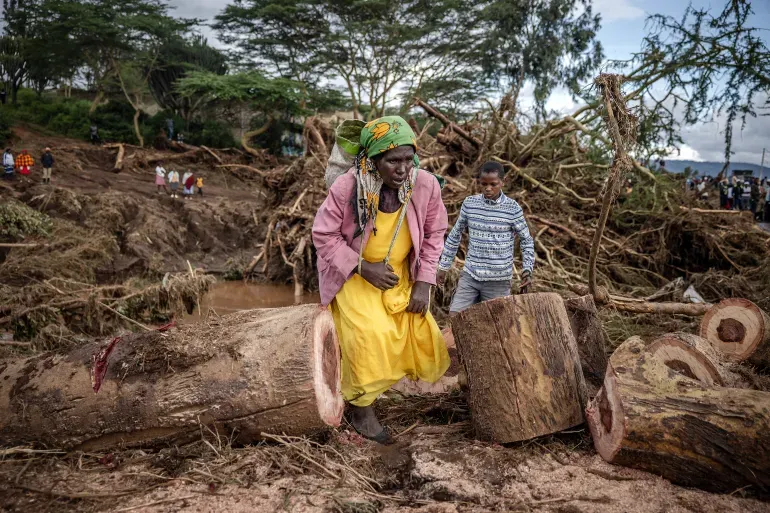East Africa – Kenya and Tanzania are on high alert as Cyclone Hidaya approaches, following weeks of torrential rains and floods that have already wreaked havoc across the region, claiming nearly 400 lives and displacing tens of thousands.
The cyclone is expected to make landfall on Tanzania’s eastern coast later Friday, with significant impacts anticipated for neighboring Kenya, particularly in the coastal city of Mombasa.
President William Ruto’s office in Kenya issued a statement predicting that Cyclone Hidaya will bring heavy rainfall, large waves, and strong winds, likely affecting marine activities and further exacerbating the already dire situation.
The Kenyan Ministry of Interior and National Administration updated that floods have claimed at least 210 lives since March, with 125 people injured, 90 missing, and 165,500 displaced.
In response to the impending cyclone and ongoing floods, mandatory evacuations have been ordered for residents near 178 dams and water reservoirs across 33 counties in Kenya. The government has urged citizens to remain vigilant, especially near major water bodies.
The situation is similarly dire in Tanzania, where recent flooding and landslides have killed at least 155 people. The Tanzania Red Cross Society warned that the cyclone is expected to dominate weather patterns, bringing more heavy rain and strong winds.
This crisis is intensified by the El Niño weather pattern, which typically leads to increased global temperatures and varied precipitation effects, including severe droughts and heavy downpours in different parts of the world.
The Kenya Meteorological Department forecasts continued heavy rains for Nairobi and other areas, with a warning for residents to be cautious of flash floods and lightning strikes. President Ruto has also mobilized the military to assist in evacuations from flood-prone areas.
The recent weather events have also impacted Kenya’s vital tourism sector, notably with about 100 tourists stranded in the Maasai Mara wildlife reserve after lodges and camps were flooded. Most were later rescued by ground and air efforts.
Amidst this devastation, the response from the Kenyan government has faced criticism for alleged unpreparedness and slow action, despite prior weather warnings.
Human Rights Watch emphasized that the government has a human rights obligation to prevent harm from climate change and protect its citizens during such extreme weather events.
As Cyclone Hidaya nears, the region braces for more challenges, highlighting the urgent need for effective disaster preparedness and response strategies in the face of increasingly severe weather patterns.
https://www.africanexponent.com/tanzania-kenya-to-face-cyclone-hidaya-this-month/


